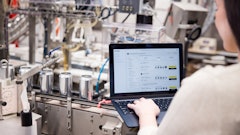
It’s been said that uncertainty is the only certainty there is. In terms of today’s global supply chain, this should be everyone’s mantra.
Adapting to market shifts and demands is nothing new to a supply chain manager. But today’s market pressures are unlike any we have seen.
Ten years ago, buyers used purchasing power to drive costs down. By consolidating purchasing power and applying economies of scale, buyers could gain a competitive advantage with lower product price points and gain market share.
Now, because of supply chain resilience, it's far more expensive to run out of products than it is to buy products cheaper. If the pandemic taught us anything, it’s that life is far more problematic with no toilet paper than having the cheapest toilet paper possible. The need for supply chain resilience has changed the way we look at manufacturing redundancy, reliability and scorecards. It’s more than just getting a bargain – it's how efficiently the product can be delivered. But resiliency also comes with additional complexity when you start trying to source, create and ship materials.
Distributors have always faced complex processes and slim margins. Add to that an uncertain economic outlook and price points that change with every news cycle, and you have problems unlike any seen in history.
As times get more dynamic and complex, investment in technology can help simplify processes. In its 2025 Technology Industry Outlook, Deloitte examined geopolitical unrest and supply chain volatility and recommended that tech leaders should work to balance globalization and self-reliance while diversifying supply chains and operations. The report stated, “Technology industry appears poised for growth in 2025, aided by increased IT spending, AI investments, and a renewed focus on innovation.”
For supply chains, there are four important technologies companies should consider to remain relevant:
· Process mining provides crucial insights into complex operations, shedding light on hidden inefficiencies.
· Generative AI steps in with predictive capabilities that traditional systems simply can't match.
· Robotic process automation streamlines repetitive tasks, reducing errors and freeing up valuable human resources.
· Finally, cloud solutions offer unmatched agility and scalability, empowering businesses with predictive capabilities that leapfrog the limitations of conventional ERP systems.
Working in the cloud is essential for today’s global supply chains. It delivers agility to handle instability and can help manage disruptions. Unlike existing ERP systems that can’t handle predictive needs, cloud-based solutions can integrate, scale and compute ability.
While all this technology is amazing, when it comes to innovating supply chain barriers, many companies don’t know where to start. Here are three important steps to take:
· Diagnose: Begin by identifying and addressing specific pain points. This involves a thorough analysis of current processes, gathering feedback from stakeholders, and using data to pinpoint inefficiencies. An effective diagnosis goes beyond recognizing what isn’t working; it delves into why it's failing and how it impacts the broader supply chain.
· Automate: After identifying pain points, address them head-on while fostering user adoption. Implement targeted automation solutions designed to tackle these specific challenges. Prioritize creating intuitive interfaces and providing adequate training to ensure high adoption rates among users. The right automation solution should deliver immediate value, enhancing the daily experience of its users.
· Optimize: Leverage Generative AI to continuously refine initial solutions. This ongoing process harnesses machine learning to identify patterns, anticipate future challenges, and propose improvements. As more data is collected, the system becomes increasingly adept at spotting optimization opportunities that humans might miss.
In today’s current economic situation, supply chains are facing inevitable uncertainty. And, in such times, making an investment in technology generates a better return on investment than any other move a business can make.



















